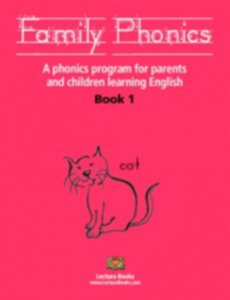The English language, or any language for that matter, is comprised of many subtle, interacting, and overlapping components. When it comes to language acquisition, both written and spoken language possess distinct but related attributes and skillsets. This is where phonics and phonemic awareness come into play.

Phonics
Phonics describes the relationship between written symbols (letters) and sounds. When your child learns that the letter B on their block or paper correlates with the /b/ (“buh”) sound, they are using phonics. Learning phonics, or letter/ sound correspondence understandings, is crucial to children’s development in reading and spelling. As PBS explains, “Written language can be compared to a code, so knowing the sounds of letters and letter combinations will help your child decode words as he reads.” As your child progresses as a reader and writer, he or she will start with recognizing consonants and soon be able to tackle increasingly complex codes or letter combinations. They will learn to recognize letter patterns and distinct word parts within words, such as the consonant-vowel-consonant (“cvc”) pattern of dog, and word endings like “ing.”
Phonemics
Phonemics deals with the other vital side of language: the spoken or oral side. A phoneme is a distinct unit of sound, such as the /d/ sound at the beginning of the spoken word dog. An example of a skill in phonemics would be identifying the first sound in the spoken word, such as, “dog starts with /d/ (“duh”). A teacher asking children during circle time to think of as many words as they can that start with the /m/ sound is a phonemic activity. Learning about spoken syllables and breaking a word up into its phonemes are other examples of oral tasks that require phonemic awareness. A child’s auditory processing is very important in the development of phonemic awareness. Reading Rockets says that, “we know that a student’s skill in phonemic awareness is a good predictor of later reading success or difficulty.” A focus on phonemic awareness support is crucial for English Language Learners, as Reading Rockets explains; “some phonemes may not be present in ELLs’ native language and, therefore, may be difficult for a student to pronounce and distinguish auditorily, as well as to place into a meaningful context.”
There are five generally accepted essential components of reading and literacy education and they include both phonics and phonemic awareness, as well as vocabulary, fluency (defined by K12 Reader as “a reader’s ability to read with speed, accuracy and expression”), and reading comprehension. Vocabulary, fluency, and reading comprehension are all built off of a students’ phonic and phonemic skills, which must be developed first. Because phonics and phonemic skills both work with the sounds in language, they support and overlap with each other as children become more literate.
For many schools, a challenge might be to reach out to Spanish-speaking parents of the EL students. The Family Phonics book set of 3 books is an easy and cost-effective way to work with parents in a structured approach to learning phonics, phonemic awareness and help their kids at the same time! Alternately, The Latino Family Literacy Project can train teachers to work with parents to increase the parent involvement efforts at their school with Hispanic parents.
